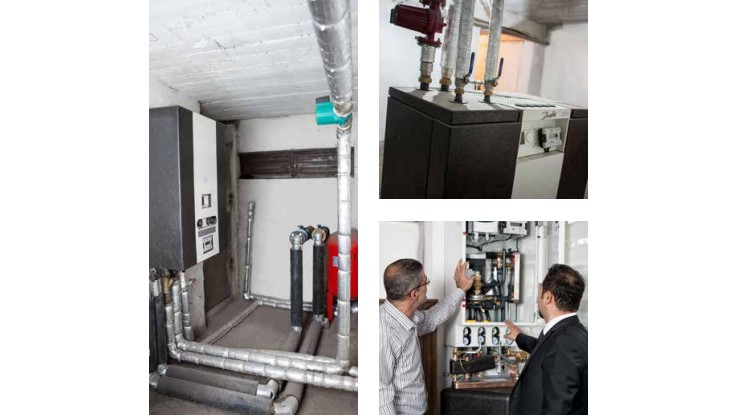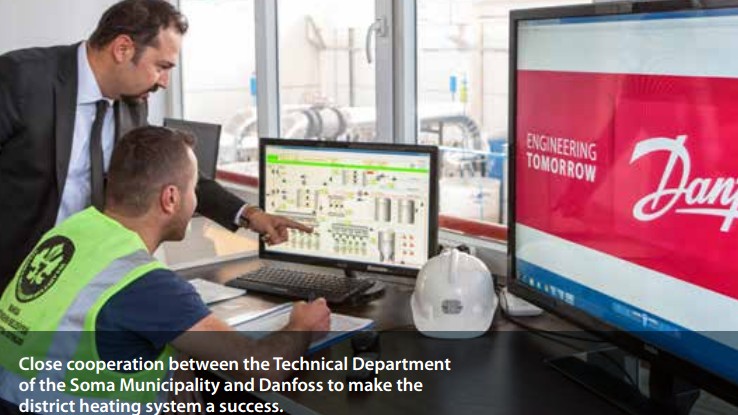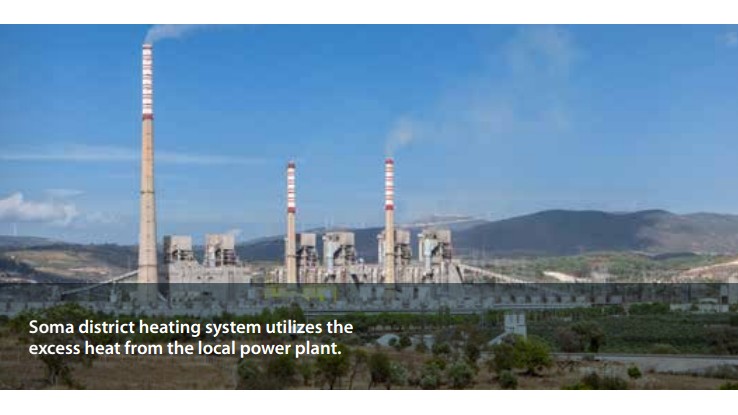600 residents in the town of Soma in Western Turkey now enjoy the comforts of a reliable and cheap heat supply from the town’s brand new district heating system.
In the coming years, more than 8,000 households will be joining the system that exploits the excess heat from the municipal power plant – a great improvement from the charcoal boilers of the past, and much less expensive.
Reliable energy supply from the district heating system
The heating season is 4-5 months in the town of Soma located in the Western part of Turkey. Until now, the residents have relied on charcoal boilers to keep them warm in winter and for hot water supplies. Ten years ago, however, the municipality started to look into smart ways of utilizing the excess heat from the local power plant. Out of these investigations, the Soma district heating system was born as the first ever district energy project in Turkey.
Many advantages of the new system
By 2016, the first 600 households were connected to the system, and when the system is fully developed in 2018 more than 8,000 households will be supplied with district heating and hot water. At the same time, the connected households have installed thermostatic radiator valves (TRVs) to get the most out of the energy savings offered by the new system.
“Our citizens are satisfied with the reliable energy supply provided by the new and first district heating system application in Turkey which is similar to others all over the world. It is a great improvement from the charcoal boilers that were used before”, says Halis SATILMIS, Resource Development and Subsidiaries President in Manisa Municipality. He underlines that commissioning and cut-over to the new system was smooth, and the Municipality has received no complaints, only praise for the new energy supply.
The district heating system not only improves indoor comfort and cut fuel costs for the residents; it also reduces the amount of greenhouse gases and contamination in terms of dust and SO2 to the local environment.
''In many cases, the households connected to the system have cut their energy bill by half – and at the same time people experience a better indoor comfort.''
- Halis SATILMIS, Resource Development and Subsidiaries President in Manisa Municipality 
Prefabricated substations – installation and operation made easy
The Technical Department of the Soma Municipality decided to build the system around prefabricated and pre-engineered substations from Danfoss. The substations that connect the individual buildings to the main supply and return line are delivered as plug and play solutions with built-in heat exchanger, control valves, electronic weather compensated temperature controller, ball valves, temperature and pressure control, etc. The prefabricated substations make installation and subsequent monitoring, service, and maintenance much easier than if the stations were built on site.
The Soma Municipality Technical Department and Danfoss have cooperated closely for the last three years to make the district heating system a success.
“We have enjoyed a good partnership with the municipality who trust in our delivery of turnkey solutions with branded, high-quality components with a long service life. Now that the system is up and running, we continue to assist the municipality with trouble-shooting and after sales services”, says Murat Toprak, Area Sales Manager, Danfoss. 
Danfoss deliveries to Soma project:
• 500 district heating substations (DSA Mini/DSA Midi/DSE (engineered)) – complete substations with built-in heat exchanger, control valves, electronic weather compensated temperature controllers, underground ball valves, pressure and temperature controllers, etc.
• Thermostatic Radiator Valves (TRVs) for heat control in households
Facts about the district heating system in Soma:
• Thermal power potential: 64 MWt
• Annual heat carrying capacity: 145,600 MWth
• Temperature: 110-60°C
• Transmission network length: 5.2 km
• Distribution network length: 65.7 km
• Power station fuel: Lignite coal 
